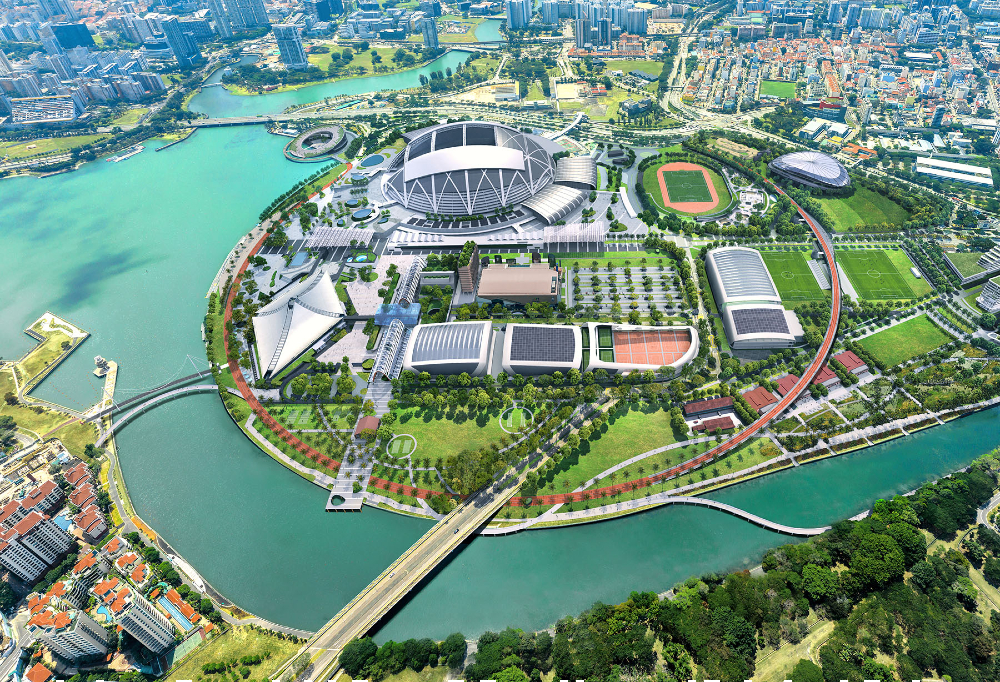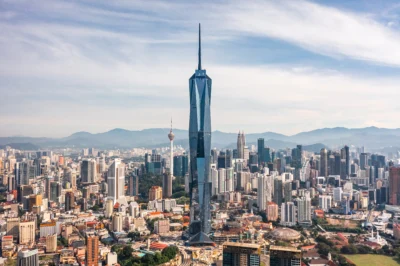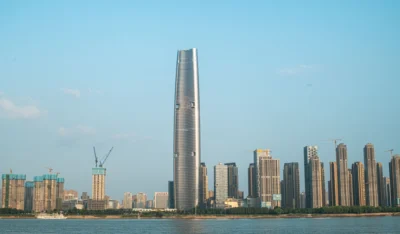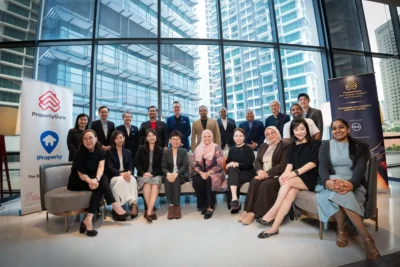Ideas to transform our cities and transcend into a new era
Since it is estimated that 75 percent of the global population will live in urban city areas by 2050, Prof. Jason Pomeroy shared some transformative ideas that may have the ability to help shape our cities

Southeast Asia has historically been a complex antithesis of colonial trade hubs alongside rural agriculture that supported villages and its communities. When the Association of Southeast Asian Nations (ASEAN) was formed in 1967, the vast majority of the countries in the region were still involved in farming. Today, a different picture exists. Whilst farming is still a mainstay in many ASEAN countries, rapid urbanisation has taken over the region-often morphing from those original trading ‘entrepots’. By 2050, 75 percent of the global population is expected to live in urban city areas. With such a huge number of people set to migrate to the cities, new innovations need to be in place to support such a huge transformation in the region. Following are some ideas that may have the ability to help shape our cities:
Social
Since 2007, half of the world’s population has been residing in cities and this will rise to 75 percent by 2050. In the past, the physical fabric of cities – namely the street and square, used to be the foci for our social interactions. However, the recent COVID-19 pandemic has seen society embrace technological advancement, and we have withdrawn from public life to find refuge in zoom calls via the comfort of our homes. In order to not lose sight of the simplest of social skills, we should re-embrace the great outdoors as a means of not just interaction ( albeit at a distance for now), but as a path to greater well-being. One example where we are doing this is the rejuvenation of the Kallang Precinct in Singapore where we aim to foster an appreciation for the outdoors through the sport, recreational programmes and happenings in both public and semi-public spaces under, over and above ground, that will combine the old school ‘analogue’ with the new world ‘digital’.
Spatial
Current world population density is 51 people per square kilometre. By 2050, it is projected to be 66 people to per square kilometre. This means more space is required per person. However, the heightened costs of land and real estate are making inner-city living prohibitive to many. One idea is to use water as an alternative surface for urbanization. Water accounts for an unexploited 70 percent of the Earth’s surface, and with sea levels rising all over the world, there is an opportunity to address both the issue of both land prices and climate change-related disaster. We could embrace water as a surface to allow communities, residents and cities to grow whilst rising with sea levels. The floating homes in the docks of Ijberg, Amsterdam are a good example of water being used as an affordable alternative to inner-city Amsterdam living that can adapt to rising sea levels. Pomeroy Studio’s research project ‘Pod Off Grid’ further explores this concept as self-sustaining zero-carbon floating communities.
Environment
Cities cover only two percent of the World’s land area, and yet account for an astonishing 70 percent of greenhouse gas emissions. Our daily fossil fuel consumption in the modern world is equivalent to filling 5 pyramids of Giza on a daily basis and then draining them every day. If we are to fight the consequences of our fossil fuel-burning past, we need to shape a carbon negative future and go beyond simply offsetting our everyday energy consumption to generating surplus clean energy by renewable sources. This is imperative if we are to sustain broader communities and have back up power for those times when Nature calls. The B House which we designed in Singapore is such an example of a Super Low energy eco-home which embraces renewable energy sources and generates such surplus to act as a power station. Such an ethos has been applied at a community scale in our affordable housing projects in the Philippines and Sweden also.
More: Role of innovation in sustainable cities
Cultural
Culture is slowly being eradicated through globalisation and technological advancement. Whilst we move forward in a modern world where disruption is the order of the day, we need to take into consideration preserving the core elements of what makes us a people and a society with a history. What used to make up traditions and time-tested rituals has now been overtaken by global consumer brands. We need to this ensure that the built environment is adaptable to social-cultural change and seeks to remind us of who we are, and what we stand for. The Brick Lane Mosque is one proponent of this concept, having been home to successive protestant, Jewish and now Muslim religious communities. The layers of these cultures have been impregnated in the bricks and mortar and tell a tale of cultural appropriation in East London. Our concept for restoring the British colonial Secretariat Building in Yangon, similarly seeks to tell a story to present and future generations of both a colonial past but a resolutely forward-looking Myanmarese art and culture scene.
Economic
We have witnessed a global shift over the last 200 years from industrial, to technological and now digital-driven economies. Such a shift has implications on the way we work, and the places we work in. The hallowed grounds of Oxbridge colleges that espoused knowledge sharing are arguably models for the new digital workplace ‘campuses’ that we see companies like Amazon, Google and Facebook appropriate. Knowledge sharing, flexible working environments, co-working and collaboration are just some of the edicts to be found in the new digital workplace. Pomeroy Studio’s ‘Alice’ green office building is such an example that forms a closed loop workplace ecosystem – fostering the talent of young Techno entrepreneurs and nurturing them to be the eventual Tech masters who will undoubtedly pass on their knowledge to the next generation within the state-of-the-art vertical campus.
Technological
In today’s world, it is easy to get caught up in technology; but how can we use technology to enhance our lives as opposed to it taking over our lives? If we want to continue enjoying life in cities and not live in dysfunctional urban habitats, then cities have to embrace technology in a more sustainable way that can enhance the ‘human experience’ and not create an emotional disconnect. In my ‘Smart Cities’ tv series, I found that successful smart cities aren’t necessarily about government-enabled technologies that do not engage its people; rather they are the cities that provide a platform for citizens to express their need and desires, whereby technologies can be co-created between civil society, state, academia and the private sector for the greater good of the city and its people. We are delighted to be part of such a movement through our smart city research with various governments and private sector bodies, (such as in BSD City, Indonesia).
More: A leading Singapore architect shares his designs for life
Ultimately, these ideas may not succeed if they are driven through a top-down government-led approach, for fear of alienating civil society. Neither will they succeed if they are unqualified machinations of civil society’s wish list. But a balanced collaboration between top-down (state) and bottom-up (civil society) interests can work- as we see in smart and sustainable models like Amsterdam. It embodies a system where civil society can express thoughts and ideas; innovations can be tested by academic institutions to establish ‘proof of concepts’; concepts can be partially funded by the private sector, and governments may ratify and roll out programmes could provide the base from which smarter, greener built environments can be created. The spheres of influence held by Government, academia, civil society and the private sector should be free to collectively conjoin with a singular ambition to implement sustainable transformations in our cities.
About Professor Jason Pomeroy
Jason Pomeroy is an award-winning architect, academic, author and TV presenter, regarded as one of the world’s thought leaders in sustainable design. He gained bachelor and master degrees from the Canterbury School of Architecture and the University of Cambridge; and his PhD from the University of Westminster. He is the founder of Singapore-based interdisciplinary design and research firm Pomeroy Studio, and sustainable education provider, Pomeroy Academy. Pomeroy has edited Cities of Opportunities: Connecting Culture and Innovation (2020), and authored Pod Off-Grid: Explorations in Low Energy Waterborne Communities (2016), The Skycourt and Skygarden: Greening the Urban Habitat (2014) and Idea House: Future Tropical Living Today (2011). He continues to raise cultural awareness of cities through his critically acclaimed TV series ‘Smart Cities 2.0’, ‘City Time Traveller’ and ‘City Redesign’.
Recommended
6 developments driving Asia’s green real estate shift
Developers are being incentivised to push a green agenda into daring new realms
The Philippines’ LIMA Estate drives sustainable industrial growth
LIMA Estate models a citywide vision that uplifts workers while appealing to climate-conscious employers
Malaysia property market rebounds with foreign interest and growth
The nation’s property market is stirring to life, fuelled by foreign buyers and major infrastructure drives
China’s renewable energy surge redefines housing norms and development
From exporting solar panels to building entire green-powered neighbourhoods, China’s renewable surge is redefining housing norms







